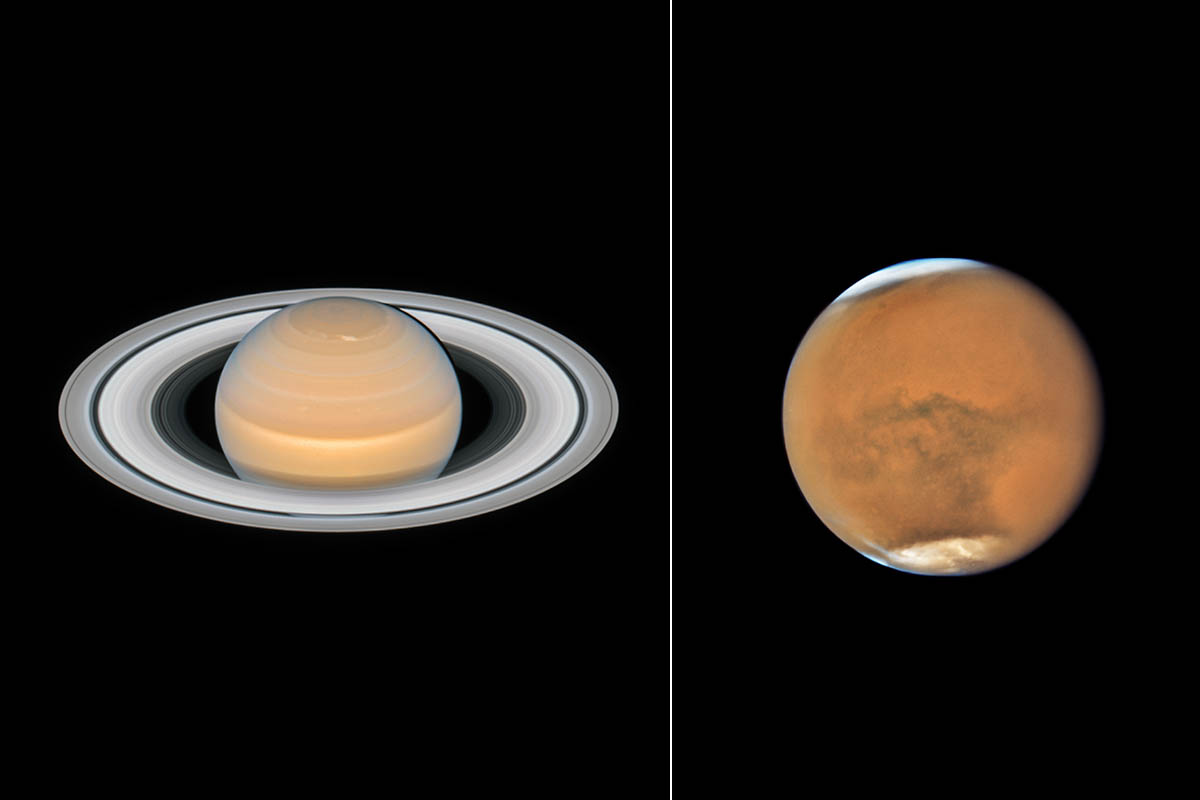NASA’s Hubble Space Telescope has photographed Saturn, left, and Mars, right, near their closest approaches to Earth in June and July 2018. (NASA)
Home NASA’s Hubble Space Telescope has photographed Saturn, left, and Mars, right, near their closest approaches to Earth in June and July 2018. (NASA) NASA’s Hubble Space Telescope has photographed Saturn, left, and Mars, right, near their closest approaches to Earth in June and July 2018. (NASA)



